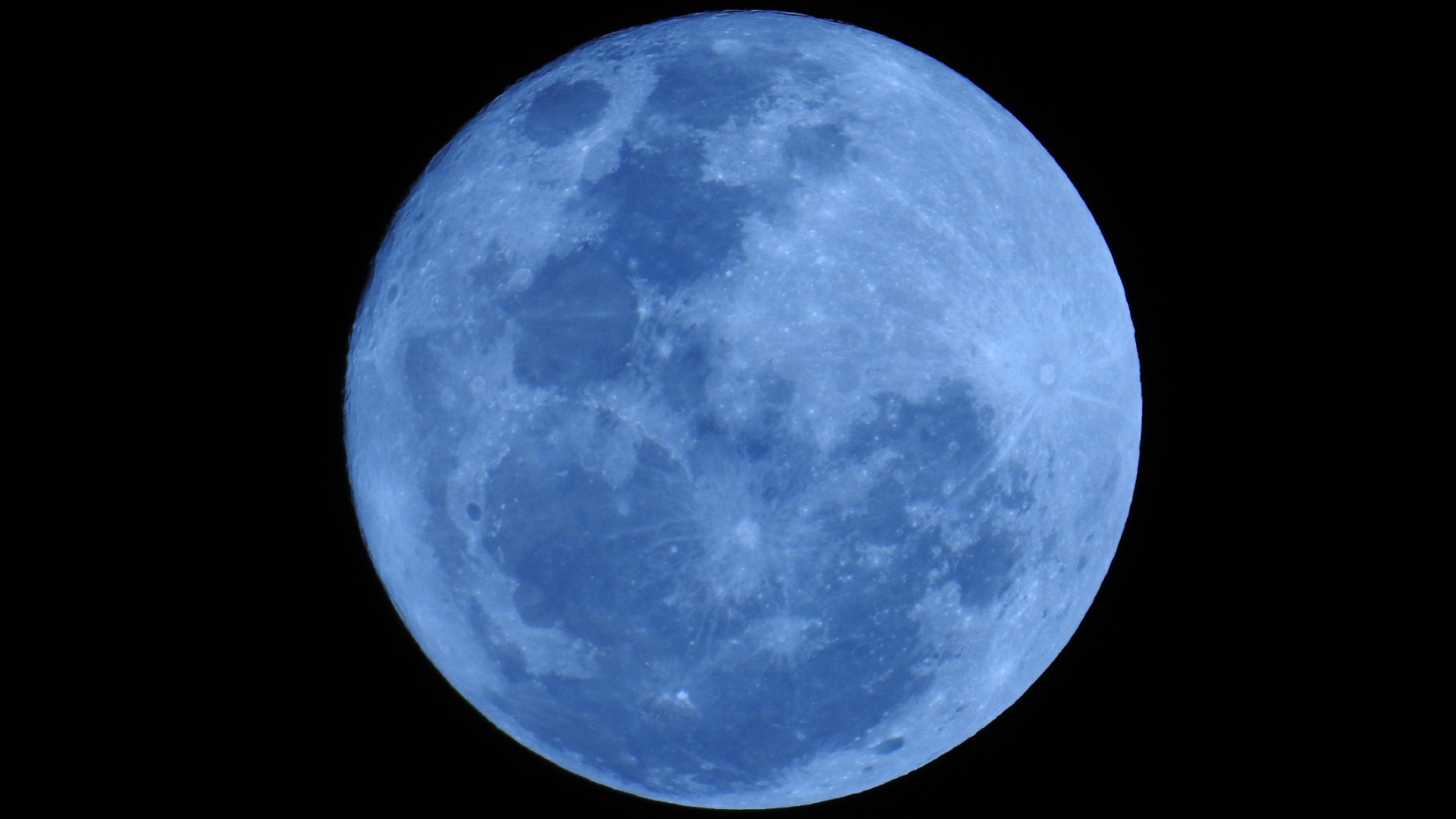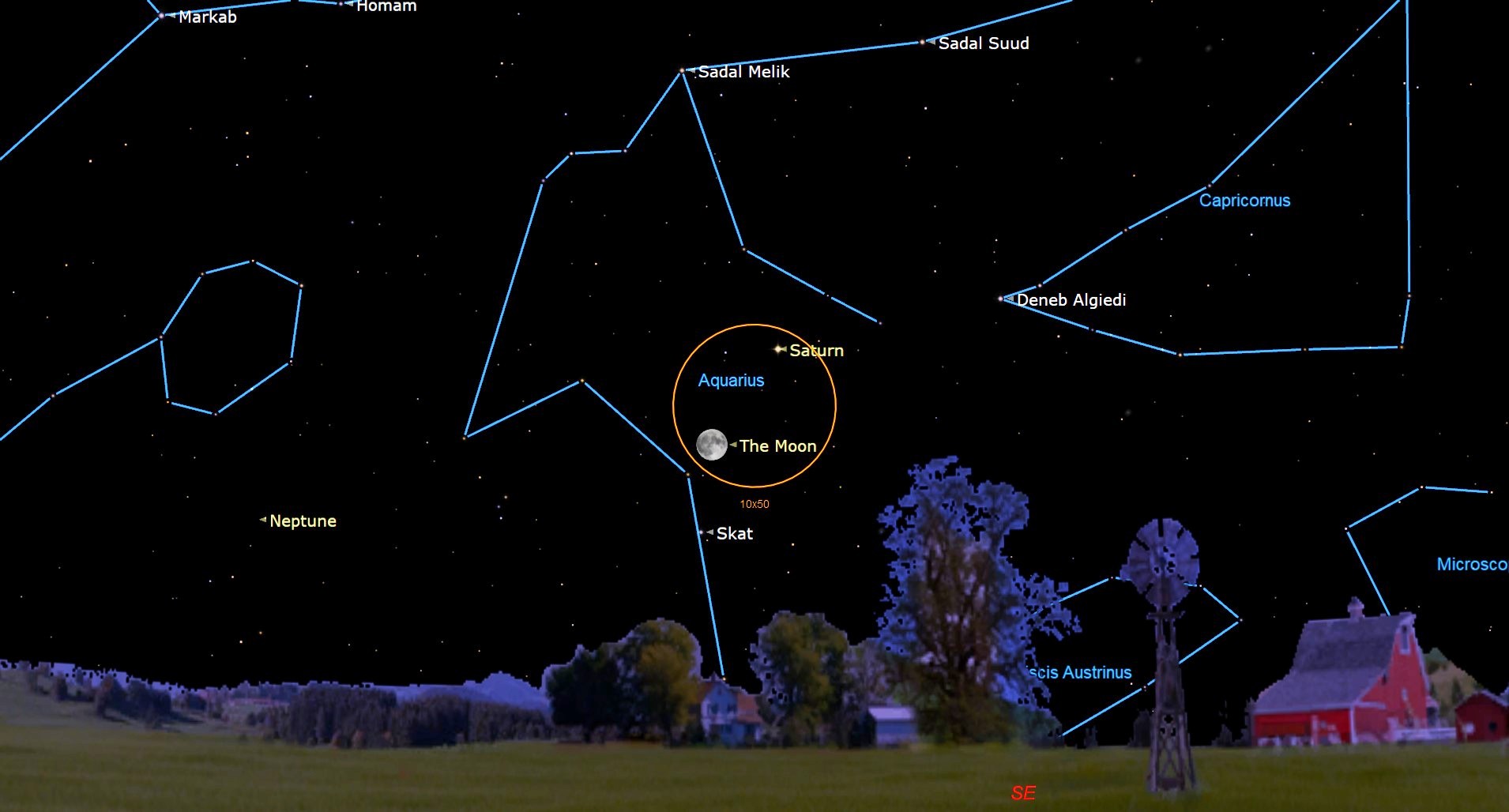The Super Blue Moon of 2023 is just a day away.
On Wednesday (Aug. 30), one of the biggest and brightest moons of the year will rise. This full moon is referred to as a Blue Moon, a term that can represent one of two things: Either the third full moon in a season that has four full moons; or, more commonly, the second of two full moons that fall in a calendar month. And just like the previous full moon on Aug. 1, this Blue Moon will also be a "supermoon," a popular term for a full moon that occurs when our natural satellite is closer to Earth, making it appear just slightly larger in the sky.

After sunset on Wednesday, this Super Blue Moon will rise in the east, as seen from New York City. But if conditions happen to be poor for moonwatching in your area, you're in luck: The Virtual Telescope Project hosted by astronomer Gianluca Masi of Rome, Italy will host a free livestream of the event starting at 11:30 p.m. on Aug. 30 (0330 GMT on Aug. 31). Watch it here at Space.com, courtesy of the project, or on the project's YouTube channel.
Related: August Super Blue Moon guide 2023
Because the moon's cycle takes 29.5 days to complete, there are technically 12.4 full moons every 365 days; that means every 2.8 years on average, there are 13 full moons in 12 months. That's not an exact average, though. Prior to this year's Blue Moon, the last time such an event occurred was on Aug. 22, 2021; the next one will take place on Aug. 19, 2024.
This Blue Moon is commonly referred to as a "supermoon" due to its distance from Earth at the time of full moon. Because the moon's orbit is elliptical, or oval-shaped, there are times when it is closer to Earth than others. When full moons occur while the moon is near its closest point to Earth (known as perigee), the moon can appear up to 14% larger in the sky. Though that size change is not quite enough to be noticeable to most skywatchers, it is enough to make these moons visibly brighter and worth making time to see in the night sky.
These enlarged moons used to be referred to as perigean full moons, until the term "supermoon" caught on roughly a decade ago. Supermoons, while not a monthly occurrence, aren't exactly rare; they can happen anywhere from two to five times a year. In fact, almost 25% of all full moons are supermoons, according to NASA.

A so-called "Super Blue Moon," the combination of a Blue Moon and a supermoon, happens less frequently. While it's possible for there to be two Super Blue Moons in one month, the average time between them is 10 years and they can be separated by as much as 20 years, according to NASA. The next Super Blue Moon won't occur until 2037, when two will actually occur relatively close together — one in January and another in March.
Joining the Super Blue Moon in the sky will be Saturn, also coming off its biggest and brightest appearance of 2023. The ringed planet will be just above and to the right of the moon, although spotting it might be difficult due to the glare of the bright, full moon.
If you are hoping to catch a look at the Super Blue Moon, our guides to the best telescopes and best binoculars are a great place to start.
If you're looking to snap photos of the Super Blue Moon or the night sky in general, check out our guide on how to photograph the moon as well as our best cameras for astrophotography and best lenses for astrophotography.
Editor's Note: If you snap an image of the Super Blue Moon and would like to share it with Space.com's readers, send your photo(s), comments, and your name and location to [email protected].

































































